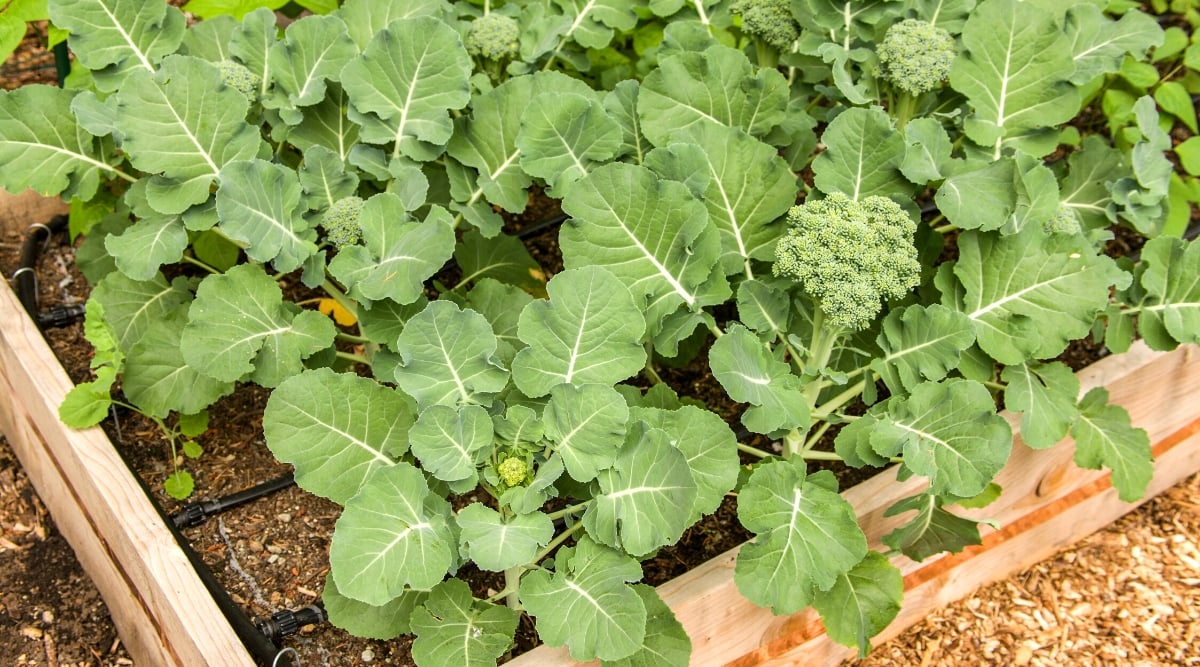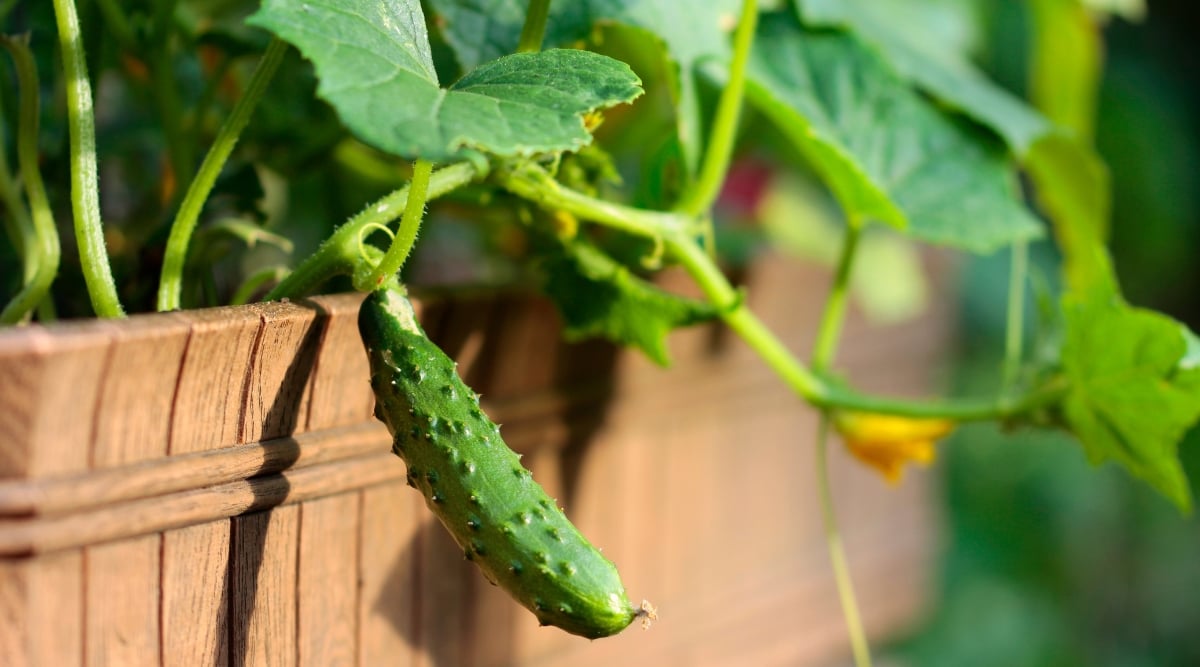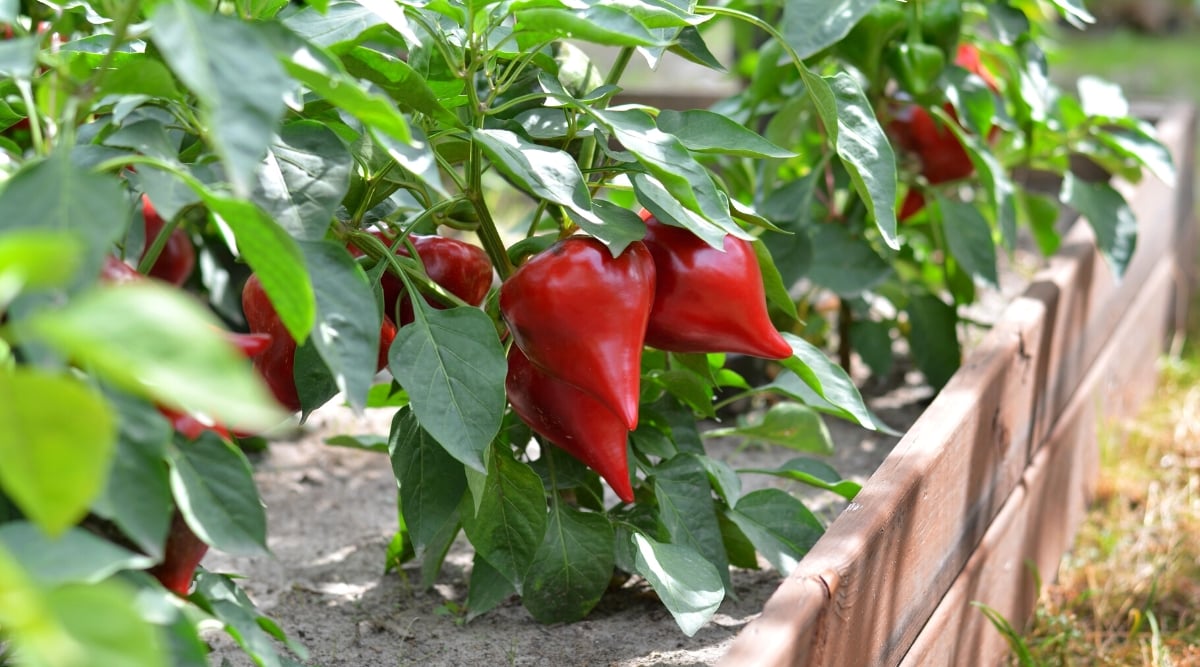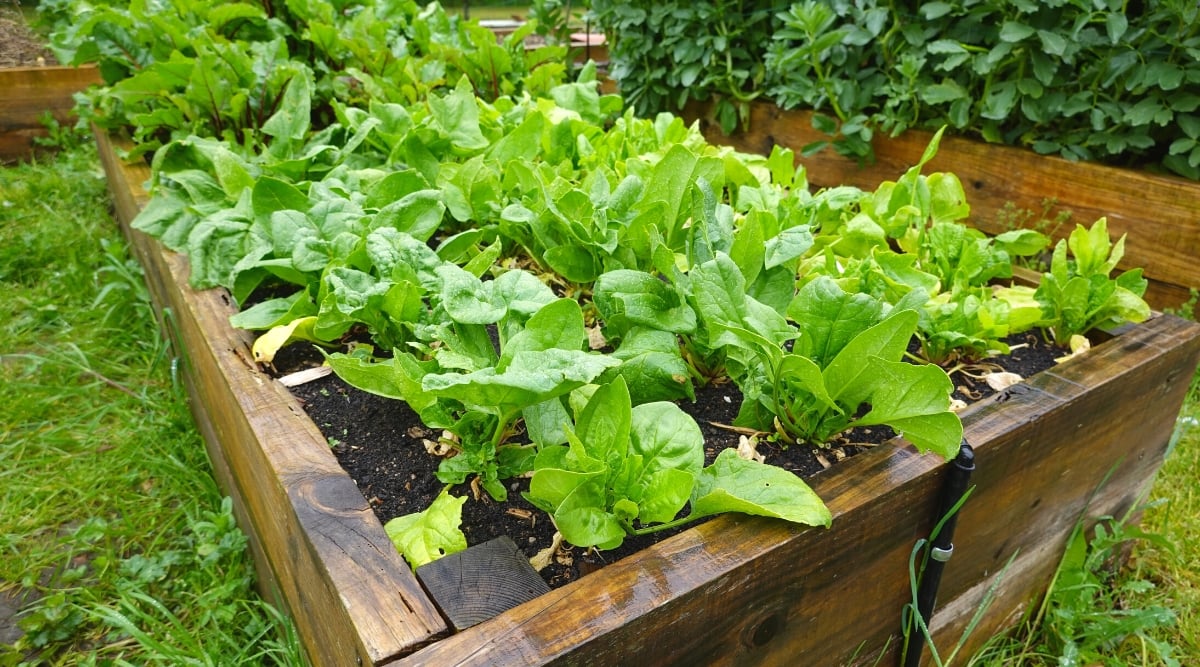Memorial Day weekend is the unofficial beginning of summer! Everyone is out and about having barbecues and working on their yards. This holiday weekend is a great time to spend with friends and families as we remember those who have given everything so we can enjoy the sunshine and our beautiful yards.
As you are enjoying this Memorial Day weekend, take a walk around your yard. Do you have a space in your yard that would be perfect for a vegetable garden? Maybe a very sunny space on a patio? If you have any sun space that you are not using yet, this is a perfect spot to start growing a victory garden and repairing the rewards of hard work.
This is the perfect time to gather your family and head to the garden center to stock up on supplies for a victory garden that will last you through the growing season and maybe even longer.
What is a Victory Garden?

The concept of Victory gardens originated during World War 1 when food supplies were dwindling. The idea was that if home vegetable gardening was promoted, it would free up food supplies for our brave overseas soldiers.
When it became evident that the United States was going to win the war, the name “victory garden” gained popularity. This new home gardening hobby took hold, and it was revitalized in World War 2 after the bombing of Pearl Harbor. By the end of the war, victory gardens were producing 40% of the consumed produce in the United States.
Growing your own food has always been a part of American culture, and over the last few years, it has been gaining popularity with gardeners, new and old alike. It is empowering to grow your own food right in your backyard and become more self-reliant.
Growing a victory garden should not be complicated, so do not let yourself be intimidated. You should choose the fruits and vegetables that your family loves. If no one likes green beans in your home, do not plant them. There are no specific rules to follow other than planting what you love!
Let’s Start Planting

If you plan ahead, you can plant many plants from seed. If you wait until Memorial Day Weekend to plant your victory garden, you will probably be planting seedlings from your garden center or local farm. Either way, grab your family, and let’s get planting!
Because this victory garden will be in raised beds, containers, or a combination of the two, you will need a lot of good-quality soil. While you can use bagged potting soil, there are many alternatives that can be cheaper. Consider DIYing a high-quality organic raised bed soil or picking something reliable up from a local landscaping company.
Once you have your pots and beds filled with soil, you will need a water source, some planting tools such as a small hand trowel, and your plants. Dig holes just large enough for your plants, place them in the holes, and backfill them with soil and water!
Just like our flowerbeds, raised gardens can become overgrown with weeds. I would recommend using garden straw as a mulch on top of your soil. Garden straw breaks down over time and will not damage your soil structure or cause harm to your plants. You will quickly have a beautiful and functional addition to your outdoor space.
Choosing a Raised Bed or Container

You may already have a raised bed or collection of containers ready for your victory garden. Birdie’s raised beds are a perfect place to start if you don’t have any raised beds.
You can also start smaller with a few grow bags, ceramic containers, or anything else you have on hand. I personally use a raised garden for my vegetables and keep pots of herbs nearby. Once you get the hang of this, I guarantee you will want to expand your victory garden.
What to Plant in Your Victory Garden
What you will plant in your victory garden is a personal choice. You should choose fruits, vegetables, and flowers you use frequently in your home.
There should be a variety of perennial edibles alongside quick-growing annual edibles to ensure that you have fresh food for as much of the year as possible. Everything I have included below is strictly a suggestion to get you started. These plants are easy to grow and will produce a bountiful crop for your family.
Flowers
Flowers are not only beautiful but also attract pollinators to your victory garden, which is essential for pollination and the production of an abundant crop. Below are just a few ideas for easy-to-grow flowers that would beautify your victory garden but can also be cut and used in vases indoors.
Marigolds

- Full Sun
- 1-4 feet tall, 1 foot wide, depending on the variety
Marigolds are easy to grow annuals. They are typically found in shades of red, yellow, orange, and white. Marigolds have a nice aroma to them that most animals do not like, making them the perfect addition to your victory garden.
Zinnia

- Full Sun
- 6 inches to 3 feet tall, 1 foot wide, depending on the variety
Zinnias come in a wide range of colors and will quickly brighten up your victory garden. There are both small and giant zinnias available that can be neatly tucked in amongst your vegetables or grown in their own pot.
Cosmos

- Full Sun
- 1-3 feet tall, 1-2 feet wide
Cosmos flowers come in many shades of pink, orange, and white. This annual is a bit more bushy than others and can take up a good amount of space. If you have the space for them, they are cheery and beautiful.
Fruits
Fruits are an essential part of our diet and are so fun to grow at home. Nothing excites the kiddos more than picking their own fruit right off the plant and snacking away!
Blueberry

- Full sun- Partial sun
- 6-8 feet tall, 6-8 feet wide
Blueberries are perennial shrubs that require a decent amount of space and are best suited for being planted in the ground. That doesn’t mean it can’t be a part of your victory garden, though! Plant a few different varieties to promote cross-pollination and encourage the largest yield.
Lemon

- Full sun- partial sun
- 6-10 feet tall at maturity, 4-8 feet wide
Citrus fruits are fun to grow. Lemons and Meyer lemons make great additions to your victory garden. Plant this citrus tree in a large container and place it on wheels if possible.
This will make it easy to bring into your home in the winter if you live in a cooler climate. Use lemons in your water for lemonade or cocktails, and use the zest while cooking chicken or seafood.
Strawberry

- Full Sun
- 6 inches to 1 foot tall, 1-2 feet wide
Strawberries are the perfect plants for your raised beds. When choosing strawberry varieties, be sure to select a June-bearing variety as well as an everbearing variety to keep your crop coming all year long.
June-bearing varieties will produce fruit early in the season, while everbearing varieties will produce two crops: one early in the season and another later in the summer.
Watermelon

- Full Sun
- 10 inches to 2 feet tall, 8 to 10 feet wide
Growing watermelons in a container is very simple to do. Start with a pot that is at least 5 gallons or more to ensure there is enough soil and nutrition to support the melons. A 10-gallon pot is even better!
Potting soil will be better for watermelons in a container rather than garden soil that could compact too quickly. Look for compact watermelon varieties for planting in pots or raised beds; if you are planting in the ground, you can choose any variety. Slice the melons and enjoy all summer long.
Vegetables

Vegetables will inevitably make up the bulk of your victory garden. Remember to plant what you will eat and that these are just suggestions. You can plant seeds in succession for many vegetables to lengthen your crop. You can also take up canning, pickling, drying, or freezing to save your produce for later.
Beets

- Full Sun
- 1-2 feet tall, 1-2 feet wide
Beets grow best in full sun and cool temperatures, so May might be a bit late to grow beets. However, you can prepare an area in your victory garden now for the fall.
Beets are root vegetables that will need some space to grow into the ground. Once your beets are ready to harvest, you can add them to salads, fresh or roasted.
Broccoli

- Full Sun
- 1-2 feet tall, 1-2 feet wide
This yummy and versatile vegetable grows best in the spring and fall but is worth the wait. Eat this raw veggie, cook it on the grill, or roast it in the oven for a delicious side dish.
Do not waste the leaves of the broccoli plant. They are also edible and can be used to make vegetable broth or added to salads.
Corn

- Full Sun
- 4-5 feet tall, 1-2 feet wide
There are new hybrids of corn that are meant specifically to be grown in containers, such as ‘on deck’ by Burpee. These plants are perfect for your victory garden, especially if you love corn and do not have the space for standard corn. Each stalk of corn should produce up to 3 ears of corn!
If growing corn, plant all of your corn in a dense planting to help with pollination. You must grow more than 10 plants for wind pollination to be viable, although you may be able to hand-pollinate.
Cucumber

- Full Sun
- 1-2 feet tall, 3-8 feet climbing and spreading
Cucumbers are a great veggie for your kids to grow. They are easy to enjoy right off of the plant and do not require any prep. They are also very easy to pickle and preserve if you don’t think you will get through them all in the summer.
Green Beans

- Full Sun
- 2-15 feet tall, 2-3 feet wide
Green beans may be the easiest veggie to grow! They have become a garden staple and are loved by many adults and kids alike. There are bush beans as well as pole beans; choose the type of bean to grow based on how much room you have.
If you select pole beans, you will need a trellis or something for them to climb up. Eat your green beans fresh. Alternatively, you could freeze or can your green beans.
Lettuce

- Full sun- partial sun
- Up to 1 foot tall, 6-8 inches wide
There are so many varieties of lettuce, from head varieties to leaf varieties. Many types of lettuce prefer to grow in cooler weather and will bolt when the temperatures rise. However, new heat-tolerant varieties will work well for your victory garden.
Onion

- Full Sun
- 1-2 feet tall, 6 inches to 1 foot tall
Onions may seem tricky to grow, but they are pretty easy. I can hardly imagine a dish that does not require onions, making this veggie the perfect addition to your victory garden. Onions can easily be pickled as well for later use.
Peas

- Full sun
- 2-3 feet tall, 6-8 inches wide
Peas like sugar snap peas are easy and fun to grow. They make great snacks right off of the vine but can also be steamed and shelled for a nutritious addition to your meal. Peas will need support to grow properly, so add a trellis or pea tower to your victory garden.
Peppers

- Full Sun
- 1-2 feet tall, 1 foot wide
There are a few good peppers to choose from. I always include bell peppers and jalapenos in my vegetable garden because that is what my family eats the most.
Every family is different, so choose the varieties that work for you. These jewel-tone beauties are easy to grow, added to pasta dishes, or snacked on raw.
Potato

- Full Sun
- 1-2 feet tall, 1-2 feet wide
Potatoes are one of the most commonly used vegetables in American cuisine. They take a while to mature, so planting in May will produce potatoes in the fall.
Keep the soil moist but not soggy. Make fries, mashed potatoes, baked potatoes, or breakfast potatoes. You can also can them and save them for later.
Pumpkin

- Full Sun
- 1-3 feet tall, 2-30 feet spread
In the past, I have enjoyed growing pumpkins just for fun, but this squash certainly has its seasonal moment in the fall. Use it in pies, pasta sauce, or feed it to your pets.
Pumpkins have greater use than just becoming a jack-o-lantern. Miniature varieties can be used for decoration or are perfect as a single-serving roasted mini-pumpkin. Larger types can be used in so many ways. The seeds taste great when roasted, too!
Radish

- Full Sun
- 2-3 feet tall, 1-2 feet wide
These little snacks are easily grown from seed and even easier from plugs. Another cool season grower, radishes grown straight in your garden are much more delicious than those at the grocery store.
Keep the radish greens and add them to your salads, sauté them, or use them to make a different spin on pesto.
Spinach

- Full sun- partial sun
- 1 foot tall, 4 inches wide
Spinach is really easy to grow from seed or from plugs and is even easier to incorporate into your diet. Spinach is loaded with vitamins and can be added to salads, sautéed, or even added to your smoothies or green juices.
Summer Squash

- Full sun
- 2-3 feet tall, 2-3 feet wide
Summer squash are pretty yellow squash that are very similar to zucchini. Use summer squash on the grill, sauteed in a skillet, or added to ratatouille. This squash also freezes nicely after slicing.
Tomatoes

- Full Sun
- 3-10 feet tall, 1-4 feet wide
Tomatoes are probably one of the most popular vegetables grown in victory gardens because there are so many different kinds with so many uses!
I often opt for a few different varieties of cherry tomatoes and only one of a larger tomato because that is what my family prefers. Top your burgers with tomatoes, or make a tomato salad with the smaller varieties. Pasta sauce is another wonderful way to use up your tomatoes. Don’t forget the salsa!
Zucchini

- Full Sun
- 2-3 feet tall, 4-5 feet spread
Just like summer squash, zucchini is easy to grow and a great vegetable to add to your summer dishes. It may help to give your zucchini some support, but there are bushy varieties of zucchini available if you don’t want to do the extra work.
Grill zucchini as a side dish, or fry them up into zucchini fries. Don’t forget the flowers; you can stuff the blossoms with cheese, fry them, and have them as a snack.
Herbs

Herbs are really easy to grow from seed, and you can typically find them in 6 packs at your garden center.
Herbs make great border plants within your victory garden, but they are also good choices for small containers that you may cluster on your deck or around your raised beds. Try a stackable vertical garden if you are tight on space.
Basil

- Full Sun
- 1-2 feet tall, 1-2 feet wide
Basil is a delicious and fragrant herb that can be used in many different cuisines. Use it to make yummy fresh pesto. Pinch the white flowers back to increase foliage growth.
Chives

- Full Sun- Partial Sun
- 1-2 feet tall, 1-2 feet wide
Chives are a member of the onion family and are very easy to grow. This plant will return year after year. The greens can be chopped and added to eggs, salads, or soup, sprinkled over baked potatoes, and so much more. The flowers are small purple globes are make a pretty cut flower.
Dill

- Full Sun
- 3-5 feet tall, 2-3 feet wide
Dill is a large herb that can take up quite a bit of space, so skip it if you do not like this fragrant herb. It can be easily used in soups, dips, or other vegetable dishes. Dill has an anise-like flavor. It is very easy to care for, and the leaves can be harvested, frozen, and saved for later.
Rosemary

- Full Sun- Partial Sun
- 1-2 feet tall, 1-2 feet wide
Rosemary is easy to grow and drought tolerant. Harvest new leaves and use them in your meat dishes. You can also throw rosemary in your bonfires to help keep bugs safely away. Freeze the stems for later use.
Sage

- Full Sun
- 1-2 feet tall, 1-2 feet wide
Sage is a beautiful plant to add to your victory gardens. Harvest the leaves to use in your cooking. The flowers are also beautiful and can be cut and added to your arrangements.
Thyme

- Full Sun
- 6 inches to 1 foot tall, 6 inches to 1 foot wide
Thyme does double duty in your victory garden. The leaves are edible and easily added to your dishes, but their flowers also attract many pollinators into your garden. Thyme is hardy in zones 5-9, making it a perennial for many gardeners.
Final Thoughts
Planting a garden together as a family is a bonding experience. Everyone can be given a particular task while planting and a chore for caring for their specific plant. You will all reach your end goal together and enjoy the literal fruits of your labor. I hope you get into the garden with your friends and family this weekend while we remember the men and women who have fought for everything we have.














